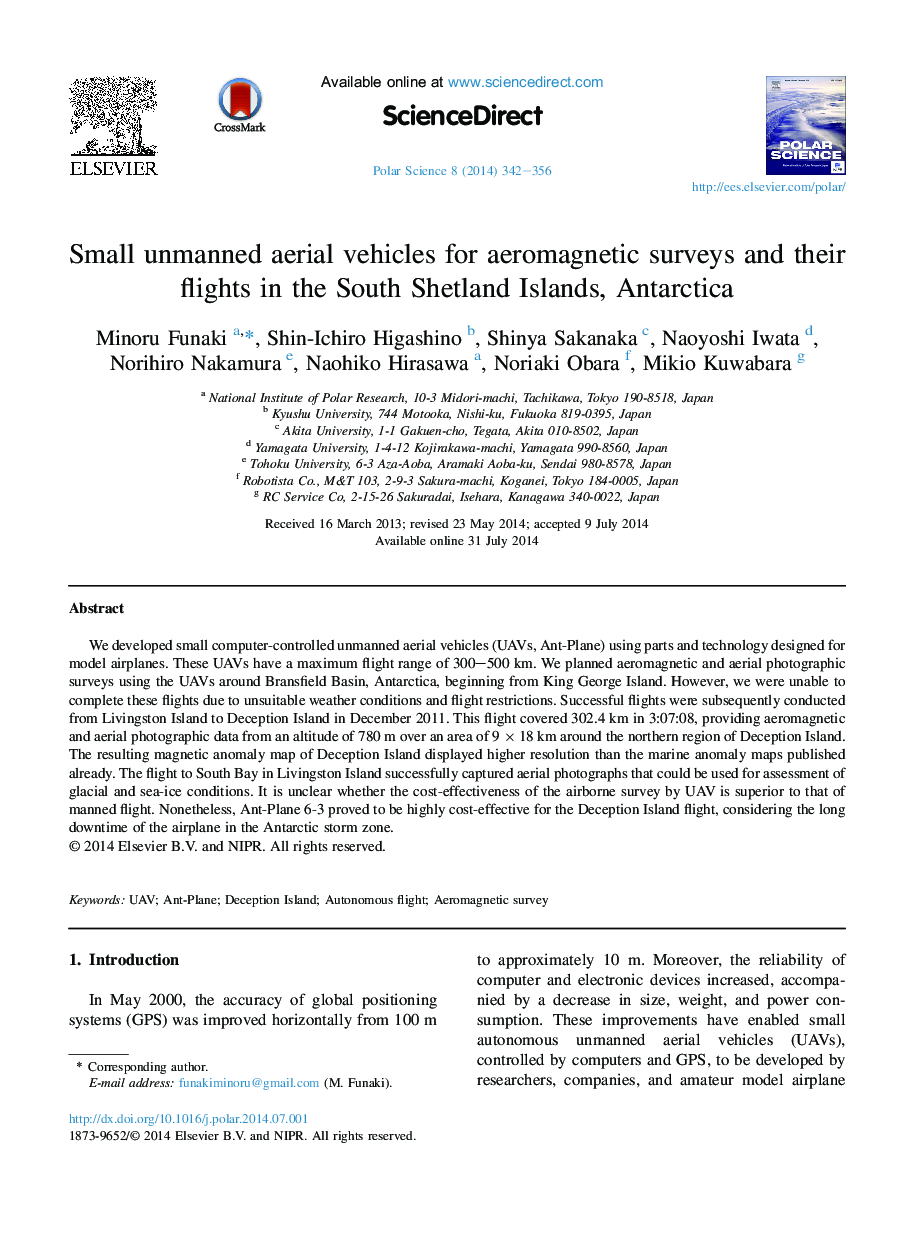| Article ID | Journal | Published Year | Pages | File Type |
|---|---|---|---|---|
| 4683323 | Polar Science | 2014 | 15 Pages |
We developed small computer-controlled unmanned aerial vehicles (UAVs, Ant-Plane) using parts and technology designed for model airplanes. These UAVs have a maximum flight range of 300–500 km. We planned aeromagnetic and aerial photographic surveys using the UAVs around Bransfield Basin, Antarctica, beginning from King George Island. However, we were unable to complete these flights due to unsuitable weather conditions and flight restrictions. Successful flights were subsequently conducted from Livingston Island to Deception Island in December 2011. This flight covered 302.4 km in 3:07:08, providing aeromagnetic and aerial photographic data from an altitude of 780 m over an area of 9 × 18 km around the northern region of Deception Island. The resulting magnetic anomaly map of Deception Island displayed higher resolution than the marine anomaly maps published already. The flight to South Bay in Livingston Island successfully captured aerial photographs that could be used for assessment of glacial and sea-ice conditions. It is unclear whether the cost-effectiveness of the airborne survey by UAV is superior to that of manned flight. Nonetheless, Ant-Plane 6-3 proved to be highly cost-effective for the Deception Island flight, considering the long downtime of the airplane in the Antarctic storm zone.
